This article was co-authored by Francisco Gomez. Francisco Gomez is the Head Coach at the FIT Potato Gym, a training gym established in 2001 in the San Francisco Bay Area. Francisco is a former competitive runner who helps endurance athletes train for major marathons like the Boston Marathon. Francisco specializes in Injury Rehab, Flexibility, Marathon Training, and Senior Fitness. He has a B.S. in Nutrition and Exercise Physiology & Running.
There are 9 references cited in this article, which can be found at the bottom of the page.
This article has been viewed 111,488 times.
Kinesio tapes were created by Dr. Kenzo Kase in the 1970s, and are the original elastic therapeutic taping. The purpose of Kinesio tapes is to relieve pain, correct muscle function, reposition subluxated joint and improve circulation of blood/lymph. You can ease pain in your muscles and joints by applying to Kinesio tapes to certain areas of the body.
Steps
Preparing to Apply the Kinesio Tape
-
1Know when you should apply Kinesio tape. Kinesio tapes can help with the healing process during and after physical activity, like playing a sport or exercising. This specially made elastic tape can be applied to muscles and joints to decrease pain or swelling, and restore motion.[1] It helps joints move more naturally and takes some off the pressure off of your muscles.[2]
- You can use Kinesio tape if you experience chronic pain in your neck due to being sore from exercise, to help blood flow during physical activity, or even if you just sit at a desk all day and need some extra relief.
-
2Get your Kinesio tape. There are several brands of Kinesio tapes on the market and while they all provide the same benefit, the differences mostly come down to how the tape comes packaged. Some brands offer pre cut tapes that are made for specific body parts.[3]
- Some of the top rated tapes are KT Tape, Performtex, Spidertech, Rock Tape.
- To relieve your neck pain with Kinesio tape, you will need three pieces, or strips of tape.
- You can find Kinesio tape at most sporting goods stores or online through shops like Amazon.com
Advertisement -
3Cut your strips. Some Kinesio tapes will come in pre cut strips, but if yours don’t, then you will have to cut them for your neck. To get a clean cut of tape, get a sharp pair of scissors.
- Cut a strip of tape about 10 centimeter (3.9 in) long, make a cut vertically along the middle to create a “Y” strip, leaving about 2 centimeter (0.8 in) at the end as the origin point.
- You can also just use two separate strips of 10 centimeter (3.9 in) if you wish.
- Trim the strips to make curved or round corners to prevent peeling, if they are not already.
-
4Clean your skin. In order for the tape to accurately stick to your skin and lift the epidermis, you need to wash and dry the skin remove any oil and sweat so your tape will stick.[4]
- Grab some soap that will lift the oil off your body without drying your skin up too much.
- Also make sure that you effectively dry off your skin so the tape sticks.
Applying the Kinesio Tape to Your Neck
-
1Stretch your neck muscles.[5] Tilt your head forward while in a comfortable sitting or standing position with your feet planted firmly on the floor. Simply bend your neck forward to stretch the Semispinalis, Levator, Scapulae, Upper Trapezius, Scalenes, and Splenius Capitus (the muscles that are in your neck, connecting to your shoulders).
- You want to comfortably bend your neck forward as if you are trying to touch your chin to your neck, but don’t stretch it so far that you are hurting yourself.
- Stretch the muscles until you feel a taut pulling sensation.
-
2Apply the vertical strips. Your first step is to apply the two vertical primary “I” strips that run vertically and mostly parallel to your spine. Place the strips starting just 1 centimeter (0.4 in) below the hairline.[6]
- You want to peel the strips as you place them down the neck as if you’re peeling a band-aid.
- As you pull down the vertical “I” strips, you want you to create a slight stretch of about 10 to 15 percent. This means pulling on the tape just slightly with the end that hasn’t been placed on the skin yet.
- Depending on if you are feeling pain in the center of your neck or on each side of the spine, you can create an upside down “V” or the fork of a “Y” with the strips or place them parallel. The tails should end near the trapezius muscle, which is just above the shoulder blade.
-
3Apply the horizontal “I” strip. Peel the tape and place it horizontally over the area of your neck where you are experiencing pain. You want to place the horizontal strip so that it forms a bit of an “A” shape with the other strips.
- For the horizontal strip, you want something closer to 75 percent stretch.
- To do this, pull the strip to full stretch and then ease up slightly. Next, place the center of the strip on the skin first and even it out on either side, applying pressure until you get towards the ends, letting them stick to the skin without any stretch.
-
4Rub the tape to heat and activate the glue. To get the glue to become as adhesive as possible, you want to give it a good rub so that you ensure it sticks, and there are no bubbles in the tape.
- When Kinesio tape is correctly applied, it it relieves pain by lifting the top layers of your skin, relieving pressure and allowing for better blood flow and muscle movement.[7]
- If your tape isn’t as adhesive as possible, you may not get the full effects.
Warnings
- If the skin gets irritated, remove the tape as soon as you can.⧼thumbs_response⧽
References
- ↑ https://share.upmc.com/2017/12/what-is-kinesiology-tape/
- ↑ Francisco Gomez. Athletic Trainer. Expert Interview. 24 October 2019.
- ↑ https://www.performancehealth.com/articles/kinesiology-tape-101-everything-you-need-to-know
- ↑ https://www.nbcnews.com/better/pop-culture/how-take-shower-according-dermatologists-ncna740526
- ↑ https://www.spine-health.com/wellness/exercise/4-easy-stretches-stiff-neck
- ↑ https://www.youtube.com/watch?v=Z0_awAcE86c
- ↑ https://www.physio-pedia.com/Kinesio_Taping
- ↑ http://www.theguardian.com/technology/2011/jul/03/kenzo-kase-kinesio-tape-sport-injury
- https://www.youtube.com/watch?v=iqPeDZKAYYk - Applying Kinesio Tape
About This Article
Using Kinesio tape is an easy way to relieve your neck pain during and after exercise. If your tape isn’t already cut into strips, first cut a 4-inch strip of tape. Then, cut the bottom half up the middle to create a Y-shape. To apply your tape, tilt your head forward to stretch your muscles and place the tape on your neck like an upside-down Y so the forks come down either side of your spine. Apply another 2-inch strip of tape horizontally over the top of the fork. Rub the tape to stick it to your skin. If you experience severe neck pain, go to your doctor for treatment. For more tips from our Physical Training co-author, including how to help Kinesio tape stick, read on.
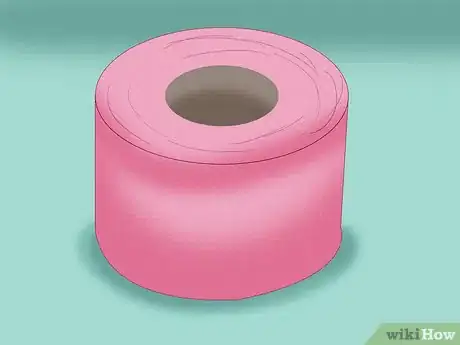


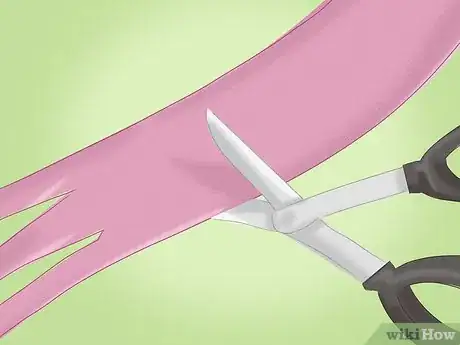
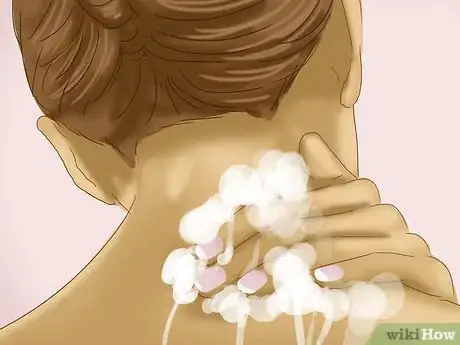
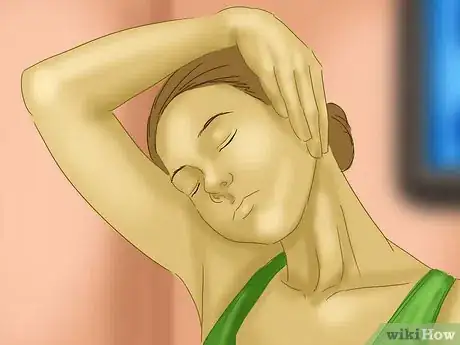



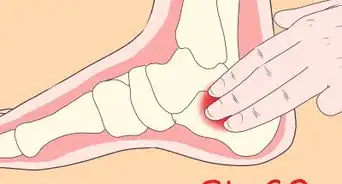
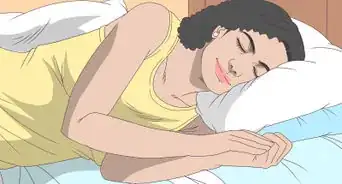


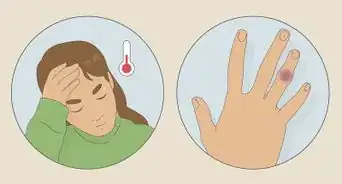



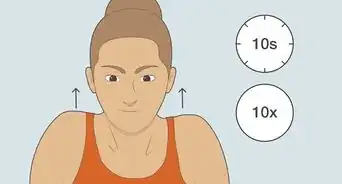
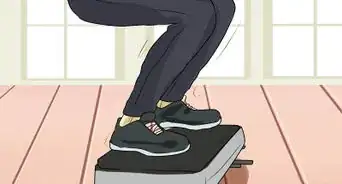
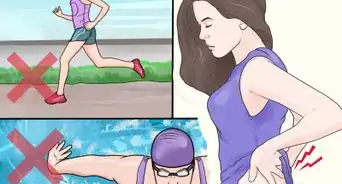


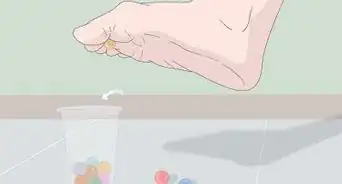






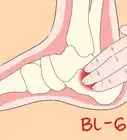






































Medical Disclaimer
The content of this article is not intended to be a substitute for professional medical advice, examination, diagnosis, or treatment. You should always contact your doctor or other qualified healthcare professional before starting, changing, or stopping any kind of health treatment.
Read More...